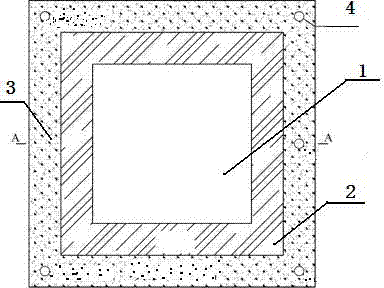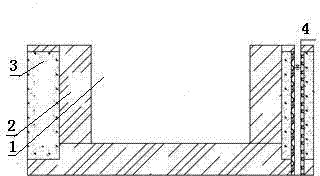Soil site dewatering and drainage method for protecting archaeological site in humid environment
A technology of wet environment and field soil, applied in construction, infrastructure engineering, etc., can solve problems such as failure to control the groundwater level in the site area, inability to discharge groundwater, poor permeability of cohesive soil, etc., achieve structural stability, eliminate hazards, technology simple effect
- Summary
- Abstract
- Description
- Claims
- Application Information
AI Technical Summary
Problems solved by technology
Method used
Image
Examples
Embodiment Construction
[0027] Below in conjunction with accompanying drawing, technical scheme of the present invention is described further:
[0028] Such as figure 1 As shown, a method for protecting archaeological site soil drainage in humid environment, in the cohesive soil area with shallow groundwater buried ( figure 2 shown). The water collection well 4 is arranged in the sand-filled drainage ditch 3, and the 4 water collection wells are arranged at the four corners (usually the plane shape of the archaeological exploration square 1 and the peripheral drainage ditch is rectangular), and the structure of the water collection well 4 is designed according to the requirements of the pumping well. Install the water filter pipe, filter screen and filter material. The depth of the water collection well 4 is 0.5m-1.0m lower than the bottom of the sand-filled drainage ditch 3 . According to the size of the usual archaeological exploration square 1, 2 to 4 water collection wells 4 can be configured. ...
PUM
 Login to View More
Login to View More Abstract
Description
Claims
Application Information
 Login to View More
Login to View More - R&D Engineer
- R&D Manager
- IP Professional
- Industry Leading Data Capabilities
- Powerful AI technology
- Patent DNA Extraction
Browse by: Latest US Patents, China's latest patents, Technical Efficacy Thesaurus, Application Domain, Technology Topic, Popular Technical Reports.
© 2024 PatSnap. All rights reserved.Legal|Privacy policy|Modern Slavery Act Transparency Statement|Sitemap|About US| Contact US: help@patsnap.com









